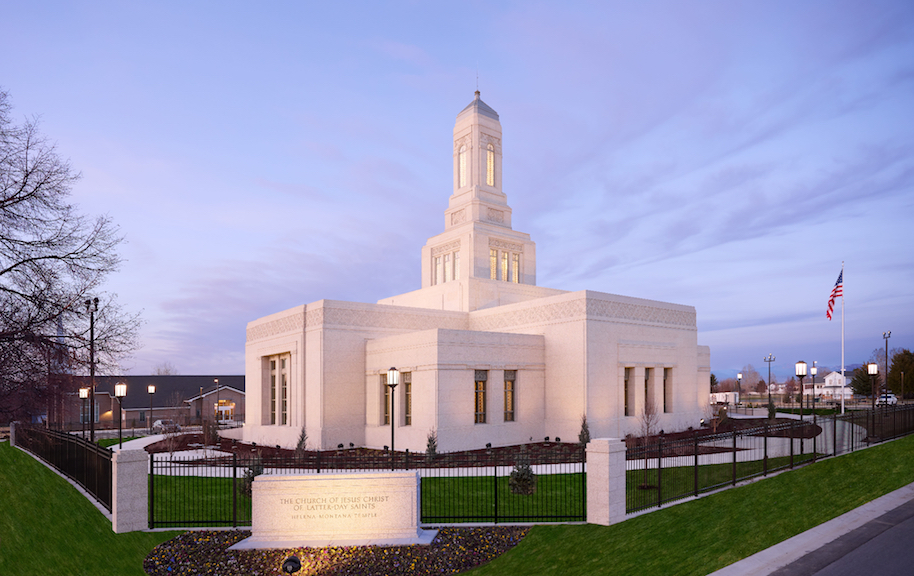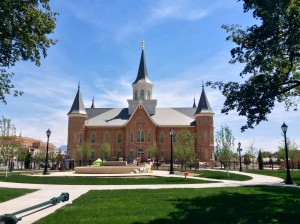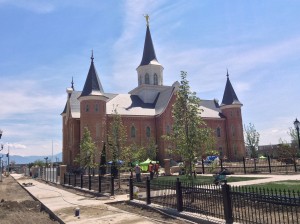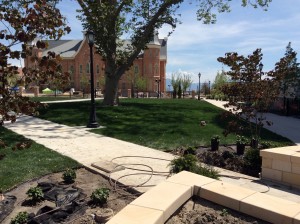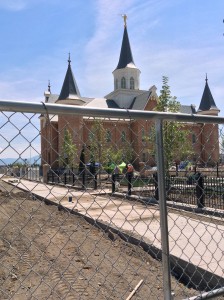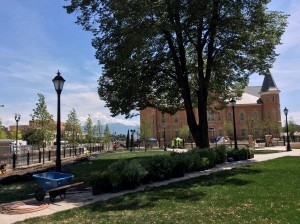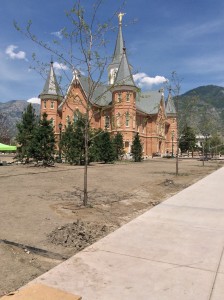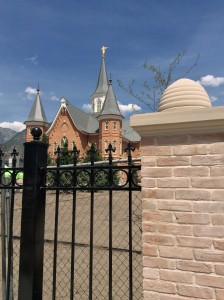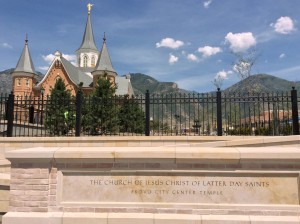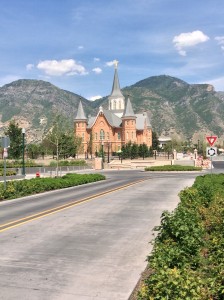Difference between revisions of "Helena Montana Temple"
(→Open House and Dedication Announced) |
|||
| Line 1: | Line 1: | ||
| − | [[Image:Helena-Montana-Temple | + | [[Image:Helena-Montana-Temple.jpg|500px|thumb|<div align="left"><span style="color:#0D8ED3"> |
A rendering of the Helena Montana Temple. All rights reserved. ©2021 Intellectual Reserve, Inc.</span></div>]] | A rendering of the Helena Montana Temple. All rights reserved. ©2021 Intellectual Reserve, Inc.</span></div>]] | ||
| Line 48: | Line 48: | ||
Latter-day Saints consider temples as houses of the Lord and the most sacred places of worship on earth. Temples differ from the Church’s meetinghouses (chapels). All are welcome to attend Sunday worship services and other weekday activities at local meetinghouses. The primary purpose of temples is for faithful members of the Church of Jesus Christ to participate in sacred ceremonies, such as marriages, which unite families forever, and proxy baptisms on behalf of deceased ancestors who did not have the opportunity to be baptized while living. | Latter-day Saints consider temples as houses of the Lord and the most sacred places of worship on earth. Temples differ from the Church’s meetinghouses (chapels). All are welcome to attend Sunday worship services and other weekday activities at local meetinghouses. The primary purpose of temples is for faithful members of the Church of Jesus Christ to participate in sacred ceremonies, such as marriages, which unite families forever, and proxy baptisms on behalf of deceased ancestors who did not have the opportunity to be baptized while living. | ||
| + | |||
| + | ==Picture Gallery of Helena Montana Temple== | ||
| + | |||
| + | <gallery class="center" mode=packed-hover> | ||
| + | File:Provo City Center Temple 1.jpg| Temple | ||
| + | File:Provo City Center Temple 2.jpg| Temple | ||
| + | File:Provo City Center Temple 3.jpg| Temple | ||
| + | File:Provo City Center Temple 4.jpg| Temple | ||
| + | File:Provo City Center Temple 5.jpg| Temple | ||
| + | File:Provo City Center Temple 6.jpg| Temple | ||
| + | File:Provo City Center Temple 7.jpg| Temple | ||
| + | File:Provo City Center Temple 8.jpg| Temple | ||
| + | File:Provo City Center Temple 9.jpg| Temple | ||
| + | </gallery> | ||
==Videos about the Helena Montana Temple== | ==Videos about the Helena Montana Temple== | ||
Revision as of 20:47, 17 May 2023
On Sunday, 4 April 2021, during the Sunday afternoon session of the 191st Annual General Conference of The Church of Jesus Christ of Latter-day Saints, President Russell M. Nelson announced that a temple will be built in Helena, Montana. The temple will be built on a 4.8-acre site located at 1260 Otter Road and will share the location with the Helena Montana Stake center.
Montana, located in north central United States and bordering Canada, is home to more than 50,000 Latter-day Saints and approximately 125 congregations. The first congregation in Montana was established in 1898.
The Helena Montana Temple will be the second temple for the Treasure State. The first is the Billings Montana Temple, which was dedicated on 20 November 1999. A third, the Missoula Montana Temple, was announced in April 2022.
Plans call for a single-story temple of approximately 10,000 square feet with a center spire. The stake center will be razed and rebuilt while the temple is constructed. A news release revealed that it will be one of the smallest temples in the world. The site location and an exterior rendering of the temple was released to the public on 20 April 2021.
The Helena Montana Temple will serve members living in the western side of the state who currently attend the Billings Montana Temple, the Spokane Washington Temple, or the Cardston Alberta Temple.
Contents
Groundbreaking Ceremony Held for Helena Montana Temple
On Saturday, 26 June 2021, just two months and 22 days after President Russell M. Nelson announced the Helena Montana Temple in April 2021 general conference, a groundbreaking for the new temple was held, marking the beginning of its construction.
Elder Vern P. Stanfill, a General Authority Seventy, presided at the Saturday, June 26, event and offered the dedicatory prayer on the temple site. Attendance at the groundbreaking was by invitation only. Those living within the temple district participated via broadcast.
During the event, Elder Standfill commented that he "pondered greatly on the many who have lived in the shadow of these mountains who . . . sacrificed, served and hoped for this day." He continued, "Theirs is a legacy of faith and discipleship of the Savior. They have driven millions of miles, met in homes, storefronts . . . and a myriad of other places as they have worked to build the Church here in Montana."
The Church Newsroom reported that Carl Hatch, a Latter-day Saint living within the temple district, offered historical background about the temple's significance to the local Church community. He said, "I testify that the holy temple is essential for obtaining eternal life which our Heavenly Father has said is the greatest gift He can give us."
Nancy Freeman, another local member, shared her testimony about how attending the temple helped blessings unfold in her life. She said, "From the temple comes the blessing of preparing us to return to our Father in Heaven. In the temple we are blessed with a greater learning and understanding of the gospel plan."
A New Building Process Speeds Up Open House and Dedication
Just 27 months after plans were announced to build a temple in Montana’s capital city and less than two years after start of construction, the Helena Montana Temple opened its doors to the public with a news conference and media tour on Monday, May 15. The public open house for the Helena Montana Temple will begin on Thursday, May 18, and run until Saturday, June 3, except for Sundays, May 21 and 28.[1]
The building is the first Latter-day Saint temple constructed through the design-manufacture-install process, according to ChurchofJesusChrist.org.
The temple’s modules were constructed in Birmingham, Alabama, and trucked to Helena, with the modules then connected and finished on site. The exterior stone cladding and tower assembly were also done on site, putting the finishing touches on this much-anticipated house of worship.
- The building’s art deco style acknowledges Helena’s vibrant late 19th-century history and design, such as the temple’s entry portico and its low arch, which references the Richardsonian-Romanesque entry of Helena’s landmark Power Building, built in 1889 and an anchor of the city’s historic district.
- Design elements reflect the area’s Native American artwork, such as the decorative patterns of flowers and leaves of the buttercup plant in geometric patterns.
- Another example is the design of the exterior and interior art glass, with the three parts representing the roots of the buttercup, the plants stems and buds, and then the full flower’s blossoms and leaves — all in a blue border referencing Native American beadwork.
- Inside, the flooring carpeting features natural colors — blues, greens, golds and creams — in suggestive nature and the other decorative elements. Paint colors of soft greens, blues and neutrals are accented at times with 22-karat gold leaf.[2]
The temple will be dedicated on Sunday, June 18, in two sessions, one at 10 a.m. and another at 1:30 p.m. Elder Gary E. Stevenson of the Quorum of the Twelve Apostles will preside at the dedication.
Before the public open house, a media day will be held Monday, May 15. Invited guests will also tour the Helena Montana Temple on Tuesday, May 16, and Wednesday, May 17.
The dedicatory sessions will be broadcast to all units in the Helena Montana Temple district. Additional details regarding the temple dedication will be announced as the event approaches.
Latter-day Saints consider temples as houses of the Lord and the most sacred places of worship on earth. Temples differ from the Church’s meetinghouses (chapels). All are welcome to attend Sunday worship services and other weekday activities at local meetinghouses. The primary purpose of temples is for faithful members of the Church of Jesus Christ to participate in sacred ceremonies, such as marriages, which unite families forever, and proxy baptisms on behalf of deceased ancestors who did not have the opportunity to be baptized while living.
